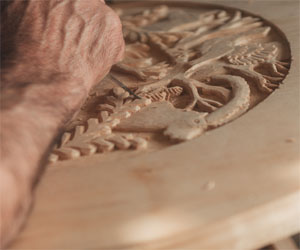


Crafting Innovation In A Glass

Microbreweries, often hailed as the backbone of the craft beer movement, have transformed the world of brewing and redefined the way people experience beer. These small, independent breweries, characterized by their focus on quality, creativity, and community, have played a pivotal role in revolutionizing the beer industry.
The Rise Of The Microbrewery: The microbrewery movement gained momentum in the late 20th century as a response to the dominance of large, corporate breweries. These passionate and entrepreneurial brewers sought to reintroduce diversity and flavor into a beer market that had become inundated with mass-produced, homogenized brews.
Independent Spirit And Innovation: Microbreweries thrive on their independent spirit. They are often born out of a brewer's desire to experiment, push boundaries, and craft beers that are unique and distinct. This spirit of innovation has led to a remarkable range of beer styles and flavor profiles that cater to every taste preference. From hoppy IPAs to rich stouts and sours, microbreweries offer a diverse array of options for beer enthusiasts.
Craftsmanship And Quality: One of the cornerstones of microbreweries is their unwavering commitment to quality. Brewmasters at these small establishments are deeply involved in every step of the brewing process, from selecting the finest ingredients to meticulously monitoring each batch. The focus on craftsmanship ensures that the beer produced is of the highest quality.
Community And Local Engagement: Microbreweries are not just places to brew and enjoy beer; they often serve as community hubs. Local microbreweries foster a sense of belonging, with patrons frequently interacting with brewers, learning about the brewing process, and enjoying unique, small-batch brews. They often feature taprooms, events, and tours, providing a social space where beer lovers can come together and celebrate their passion.
Economic Impact: In addition to providing a gathering place for communities, microbreweries contribute significantly to the local economy. They create jobs, source ingredients locally when possible, and attract tourists to the area. The craft beer industry has also led to the growth of related businesses, such as craft beer bars, restaurants, and beer tourism.
Sustainability And Environmental Consciousness: Many microbreweries have embraced sustainability and environmental responsibility. They prioritize eco-friendly practices, from water and energy conservation to waste reduction. Some microbreweries even partner with local farmers to repurpose spent grains as animal feed or compost.
Collaborations And Creativity: Microbreweries often collaborate with other breweries, local businesses, and even artists to create limited-edition brews. These collaborations push the boundaries of brewing and result in experimental, one-of-a-kind beers. Such creative endeavors often lead to the creation of unique and unexpected flavor combinations.
Challenges And Growth: While microbreweries have experienced significant growth, they face challenges as well, including increased competition, distribution hurdles, and market saturation. Nonetheless, their resilience and dedication to quality and community engagement continue to drive their success.
Microbreweries are a testament to the passion and creativity of brewers who dare to challenge the norm and redefine the beer landscape. They have given beer lovers a reason to explore new flavors and have revitalized the appreciation of quality craftsmanship in brewing. In an age where mass production often overshadows individuality, microbreweries serve as a beacon of innovation and a reminder of the craft's rich, flavorful history. So, raise a glass to the microbreweries that continue to craft innovation and pour passion into every pint.



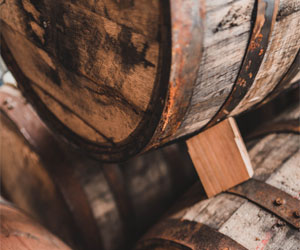


The Power Of Hands-On Expression
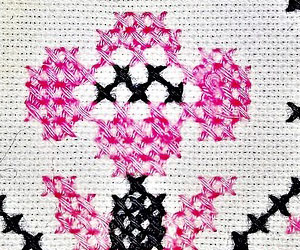 At its core, DIY creativity encourages self-expression. It allows individuals to break free from the constraints of pre-made products and to personalize their world. Whether you're sewing your own clothes, designing custom furniture, or creating unique artwork, DIY projects enable you to infuse your personality and style into every piece. This self-expression not only fosters a sense of ownership but also promotes a deeper connection to the things you make.
At its core, DIY creativity encourages self-expression. It allows individuals to break free from the constraints of pre-made products and to personalize their world. Whether you're sewing your own clothes, designing custom furniture, or creating unique artwork, DIY projects enable you to infuse your personality and style into every piece. This self-expression not only fosters a sense of ownership but also promotes a deeper connection to the things you make.
Engaging in DIY projects fosters a sense of accomplishment. There's an undeniable satisfaction in turning raw materials into a functional item or a work of art. Completing a DIY project instills a sense of pride and boosts self-esteem.
The Art Of Crewel Embroidery
 A Stitch In Time: The History Of Crewel Embroidery
A Stitch In Time: The History Of Crewel Embroidery
Crewel embroidery has a storied history that dates back over a thousand years. The word "crewel" is believed to have originated from the Old French word "croisel," which referred to a piece of metal or a slender wire used for embroidery. Crewelwork gained prominence in Europe during the 16th and 17th centuries and was particularly associated with England.
Characteristics Of Crewel Embroidery:
Crewel embroidery is known for its distinct characteristics, which set it apart from other embroidery techniques:
Use Of Crewel Wool: Crewel wool, a fine and twisted two-ply yarn, is the primary thread used in this technique. Its thickness and texture lend depth and dimension to the designs.
Raised Surface Stitches: Crewel embroidery often employs raised or padded stitches. These give the designs a textured, three-dimensional quality.
Botanical And Natural Motifs: Traditional crewelwork is renowned for its intricate depictions of botanical and natural motifs, including flowers, vines, and animals. These designs capture the essence of the natural world.
A Universal Craft With Unique Flavors
 Asia: The Cradle Of Ceramic Art
Asia: The Cradle Of Ceramic Art
The roots of pottery in Asia run deep, with China often hailed as the birthplace of ceramics. Chinese pottery traditions date back thousands of years, and they have left an indelible mark on the global ceramic landscape. Iconic Chinese porcelain, known for its delicate blue and white designs, is world-renowned. Japanese pottery, on the other hand, is celebrated for its earthy, rustic aesthetics and meticulous craftsmanship. Countries like Korea, Thailand, and Vietnam have their unique ceramic traditions, showcasing the diversity within Asian pottery.
Africa: The Rhythms Of Clay
Across the African continent, pottery is both a functional and artistic tradition. The terracotta pottery of the Nok civilization in Nigeria, dating back to 1000 BC, represents some of the earliest ceramic artifacts in sub-Saharan Africa. In many African cultures, women are the primary potters, carrying on age-old traditions of coiling and hand-building. Each piece reflects the cultural values, motifs, and symbols of the community it hails from.
The Americas: Ancient Craftsmanship
In the Americas, pre-Columbian civilizations made remarkable contributions to pottery. The intricate designs and remarkable clay work of the Moche, Inca, and Maya peoples provide a window into the artistic and functional aspects of their societies. Native American tribes have their own distinctive styles, using clay to create pottery that is deeply rooted in their spiritual and cultural practices.
Europe: A Tapestry Of Styles
Europe boasts a rich tapestry of pottery traditions. The majolica pottery of Italy, famous for its colorful glazes and ornate patterns, showcases the Mediterranean region's artistry. The Delftware of the Netherlands is cherished for its blue and white hand-painted pottery. Spain, with its talavera and sevillana ceramics, is known for its vibrant designs. Eastern Europe, including Poland, Hungary, and Russia, boasts unique styles reflecting both functional and artistic sensibilities.
A Symphony Of Flavors And Aromas
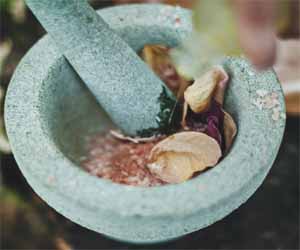 The beauty of herb gardens lies not only in the aromatic and flavorful treasures they offer but also in the diverse range of herbs that can be cultivated. These multifaceted gardens are a testament to the incredible variety of plants that can be grown for culinary, medicinal, and aesthetic purposes. In this article, we'll explore the world of herb garden diversity, celebrating the rich tapestry of flavors, aromas, and colors it can bring to your life.
The beauty of herb gardens lies not only in the aromatic and flavorful treasures they offer but also in the diverse range of herbs that can be cultivated. These multifaceted gardens are a testament to the incredible variety of plants that can be grown for culinary, medicinal, and aesthetic purposes. In this article, we'll explore the world of herb garden diversity, celebrating the rich tapestry of flavors, aromas, and colors it can bring to your life.
The Many Faces Of Herb Diversity
Herb gardens are a treasure trove of plant diversity. They encompass a vast array of herbs, each with its unique characteristics and uses:
Culinary Herbs: These are the culinary classics like basil, oregano, rosemary, and thyme, which infuse dishes with diverse flavors, from sweet and fragrant to earthy and robust.
Medicinal Herbs: Herbs like chamomile, lavender, and echinacea have been used for centuries for their healing properties. They offer a diverse range of remedies, from soothing teas to natural salves.
Aromatic Herbs: Lavender, mint, and lemon balm are renowned for their captivating aromas. They are often used for creating aromatic oils, perfumes, and potpourri.
The Secrets To Healthy Skin And Hair
 Aloe Vera: Often referred to as the "plant of immortality," aloe vera is a powerful natural ingredient for skin and hair. It contains vitamins, minerals, and enzymes that soothe and hydrate the skin, making it an effective remedy for sunburns and irritations. Aloe vera is also known to promote hair growth and reduce dandruff.
Aloe Vera: Often referred to as the "plant of immortality," aloe vera is a powerful natural ingredient for skin and hair. It contains vitamins, minerals, and enzymes that soothe and hydrate the skin, making it an effective remedy for sunburns and irritations. Aloe vera is also known to promote hair growth and reduce dandruff.
Coconut Oil: Rich in fatty acids and vitamins, coconut oil is a beloved ingredient for both skin and hair care. It provides intense moisturization, leaving skin soft and supple, and helps with hair conditioning and preventing split ends.
Honey: Honey is a natural humectant, meaning it helps the skin retain moisture. Its antibacterial properties make it effective in treating acne, while its antioxidants combat signs of aging.
Shea Butter: Shea butter is a skin superfood. It's packed with essential fatty acids and vitamins that provide moisture and aid in skin repair. It's particularly useful for dry and sensitive skin.
Green Tea: Green tea is rich in antioxidants known as polyphenols, which help combat free radicals and inflammation. Consuming green tea or applying it topically can improve skin texture and protect against UV damage.
From Seed To Harvest
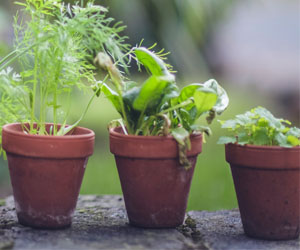 Soil Preparation
Soil Preparation
Prepare the soil by ensuring it is well-draining and rich in organic matter. Herbs generally prefer slightly alkaline soil with good aeration. To improve soil quality, incorporate compost or well-rotted organic matter.
Planting Techniques
When planting herbs, pay attention to spacing. Different herbs have varying requirements for space between plants. Proper spacing allows air circulation and minimizes the risk of disease.
Watering And Drainage
Watering is a critical aspect of herb growing. Most herbs prefer well-drained soil, so avoid overwatering, which can lead to root rot. Water deeply but less frequently, allowing the soil to dry out between watering sessions.
Sunlight Requirements
Herbs love sunlight, so make sure your garden receives at least 6 to 8 hours of direct sunlight per day. If you're growing herbs indoors, consider providing supplemental light with grow lights.
Pruning And Pinching
Regular pruning and pinching are key techniques for encouraging bushier growth and better flavor. Pinching the tips of the branches or cutting back leggy growth can stimulate new growth and prevent the herbs from becoming too woody.
Pest Management
Herbs are generally hardy, but they can still fall victim to pests and diseases. Consider natural pest control methods like companion planting or introducing beneficial insects like ladybugs. Inspect your plants regularly and address issues promptly.
Harvesting Techniques
Knowing when and how to harvest your herbs is crucial. Harvest in the morning when the essential oils are at their peak, and use sharp scissors or shears to make clean cuts. Be sure to avoid removing more than a third of the plant at a time to ensure continued growth.
Crafting Your Inner World
 Creativity Unleashed: Woodworking provides a blank canvas on which you can paint your creativity. Whether you're crafting a meticulously designed piece of furniture, an ornate wooden sculpture, or a functional household item, every project is an opportunity for self-expression. The process of envisioning a project, selecting the wood, planning the design, and executing it involves making a series of artistic choices. These choices reflect your personal style, your interpretation of the world, and your emotions at the moment of creation.
Creativity Unleashed: Woodworking provides a blank canvas on which you can paint your creativity. Whether you're crafting a meticulously designed piece of furniture, an ornate wooden sculpture, or a functional household item, every project is an opportunity for self-expression. The process of envisioning a project, selecting the wood, planning the design, and executing it involves making a series of artistic choices. These choices reflect your personal style, your interpretation of the world, and your emotions at the moment of creation.
Emotional Release: For many woodworkers, the act of working with wood is a form of catharsis. The physicality of shaping and molding wood, combined with the rhythmic sounds of saws and the tactile feedback from the tools, can be a meditative and soothing experience. It's a way to release stress and express pent-up emotions. Some woodworkers even create pieces that embody their feelings, allowing them to externalize and share what might otherwise remain hidden.
Craftsmanship And Precision: Woodworking is an art that demands precision and craftsmanship. The attention to detail, the patience required, and the meticulous nature of the work all contribute to a sense of personal accomplishment. In each piece you create, you leave a piece of yourself—a testament to your dedication, skills, and the values you uphold.